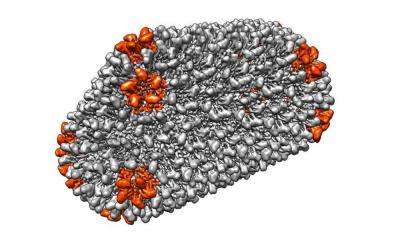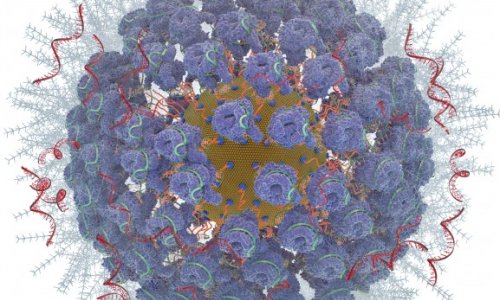News • Integration sites across anatomical sites
Where HIV hides in the body (and how to find it)
Researchers at Western and the University of Calgary have discovered how HIV hides in different parts of the body by embedding itself into the DNA of cells in a tissue-specific manner, offering new insights into why the virus is so difficult to eliminate and cure – even decades after infection and treatment.

Image source: Western University; photo: Frank Neufeld
The study, led by Western’s Stephen Barr and UCalgary’s Guido van Marle, reveals that HIV cloaks itself in the DNA of infected cells using unique DNA patterns in the brain, blood and parts of the digestive tract. For example, in the brain, the virus avoids genes and hides in less active parts of the DNA.
The findings were published by the journal Communications Medicine.
“We found that HIV doesn’t integrate randomly. Instead, it follows unique patterns in different tissues, possibly shaped by the local environment and immune responses,” said Barr, microbiology and immunology professor at Western’s Schulich School of Medicine & Dentistry. “This helps explain how HIV manages to persist in the body for decades, and why certain tissues may act as reservoirs of infection.”
For the study, Barr, van Marle and their collaborators at the Southern Alberta HIV Clinic and University of Alberta used rare tissue samples from people living with the virus during the early years of the HIV/AIDS pandemic (around 1993), before modern treatment existed. This gave the researchers a unique opportunity to look at how the virus behaved in its natural state across different organs – all within the same individuals. “Our study is a powerful example of how we can learn from historic samples to better understand a virus that continues to affect tens of millions of people worldwide,” said Barr.
Knowing where the virus hides in our genomes will help us identify ways to target those cells and tissues with targeted therapeutic approaches – either by eliminating these cells or ‘silencing’ the virus
Guido van Marle
The research team acknowledges the individuals who volunteered to participate in studies during the early, uncertain days of the HIV/AIDS pandemic. “Their willingness to contribute samples, at a time of stigma, fear and with limited treatment options, was an act of bravery, foresight and generosity that continues to advance scientific understanding of HIV and save lives today,” said van Marle, microbiology, immunology and infectious diseases professor at UCalgary’s Cumming School of Medicine.
For this novel Canadian approach to understanding HIV, the researchers investigated historic samples taken from the esophagus, blood, stomach, small intestine and colon of individuals with unmatched brain tissue from other individuals. They evaluated how often the virus integrated into specific regions of the genome and compared these patterns across various tissues from different individuals.
“Knowing where the virus hides in our genomes will help us identify ways to target those cells and tissues with targeted therapeutic approaches – either by eliminating these cells or ‘silencing’ the virus,” said van Marle.
The research was supported by the Canadian Institutes of Health Research and the National Health Research and Development Program and builds on years of collaborative work between Western, UCalgary, the Southern Alberta HIV Clinic and UAlberta. “Studies like this are highly collaborative and only possible when many of us work together,” said Barr.
Source: Western University
09.10.2025











